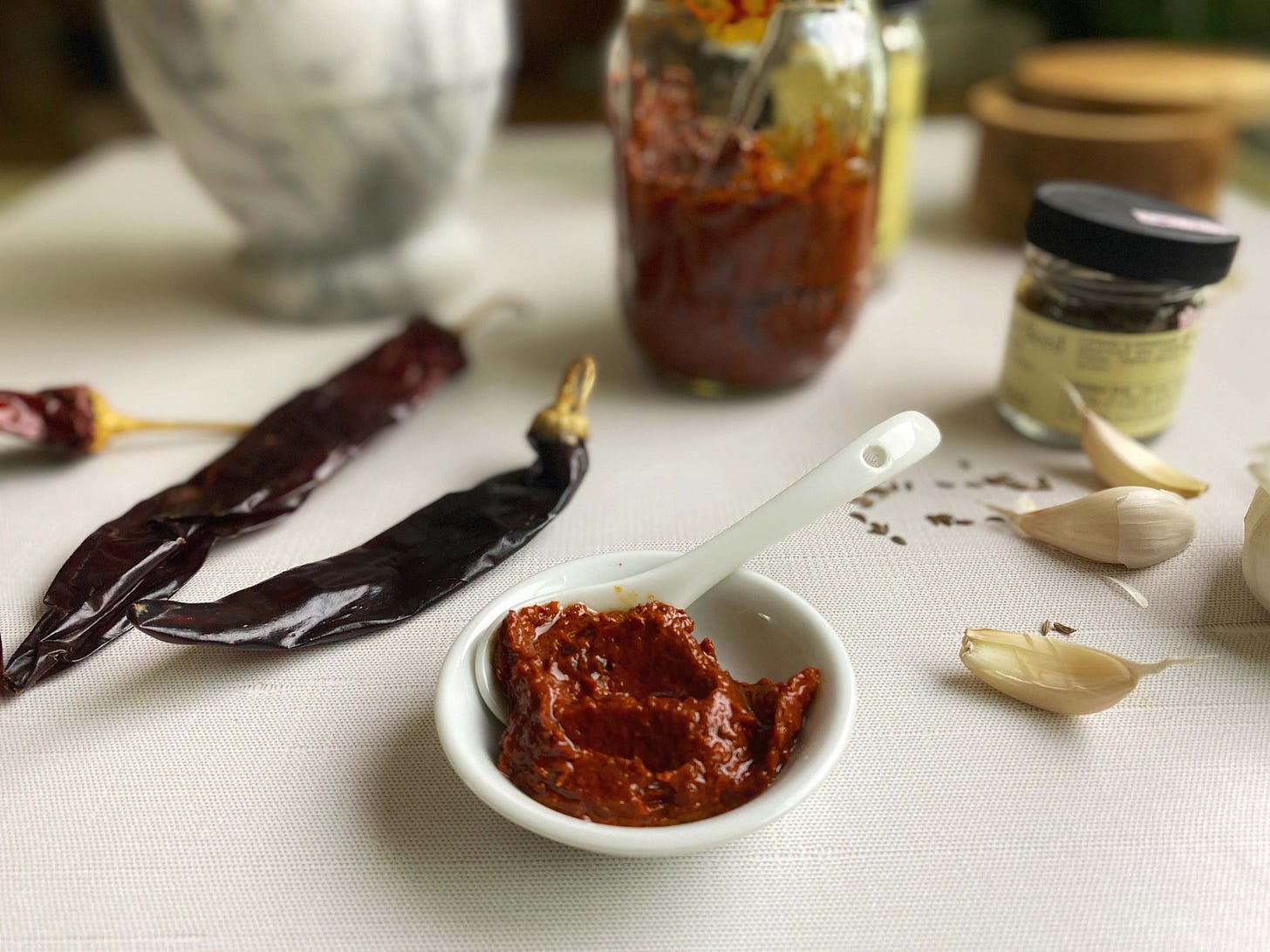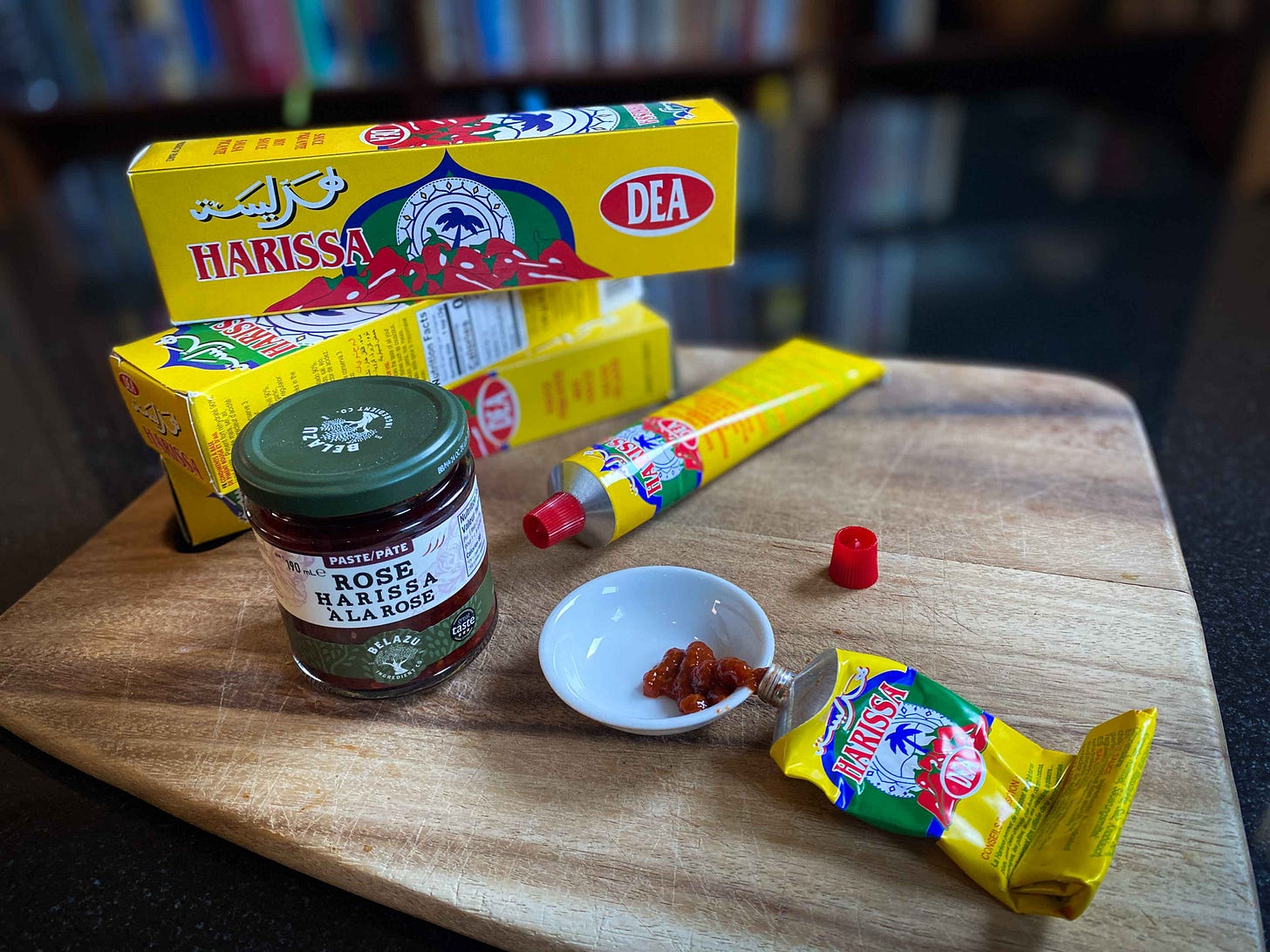Hot on the harissa trail
You'd think it would be easy to find a definitive recipe for Tunisia's special sauce 🌶️
Happy Friday, fiery cook!
Did you know that last December, UNESCO granted harissa from Tunisia a place on its “intangible cultural heritage” list? That important piece of news eluded me until about six weeks ago, when Eric Kim wrote about it in the New York Times.
I happened to be in France when I read about it, and couldn’t get it out of my mind. Harissa! It’s one of my favorite substances in the world. It’s one of those things I stockpile, thanks to an irrational fear of running out. But now I had to make some — which I hadn’t done in a few years.
I was away from all my kitchen tools, in a small seaside town. Even if I had a food processor, mortar or mini-chop, hard to imagine conjuring dried chiles, or even caraway seeds.
Soon as I was back home, I’d need to grind up a batch of the dreamy red paste. For one thing, a lack of a harissa recipe was a gaping hole in the Cooks Without Borders recipe bank. But mostly, though I dearly love the harissa that comes in a tube, there’s nothing like homemade harissa. It’s velvety smooth and way more lively, with gorgeous depth of flavor.
The Times story did not include a recipe for harissa itself, only one for Sticky Harissa Chicken Wings. Thusly did I tumble down this week’s rabbit hole, getting completely carawayed away.
Back in 2007, when I ran the food section at the L.A. Times, Amy Scattergood wrote a story about her love affair with harissa, with the fabulous headline Harissa, mon amour. Her recipe was basic but wonderful; I’d used something similar ever since. The only ingredients were dried chiles, garlic, caraway seed, coriander seed, salt and olive oil. (Amy, FYI, was a food-loving poet I’d hired to be on our food-writing staff. After our team fell apart as the economy imploded the following year, she became Jonathan Gold’s editor at LA Weekly; both eventually returned to the L.A. Times, where Gold had been some years before; Amy took over as section editor. All of which is to say I did not make a mistake hiring a poet on the food staff.)
Surely, though, there had to be a definitive harissa recipe somewhere out there (Amy’s hadn’t cited inspiration or a source for hers). I couldn’t find one in my entire cookbook collection — not in Jessica B. Harris’ The Africa Cookbook, not in Paula Wolfert’s The Food of Morocco. There’s not a single Tunisian cookbook in my collection, which led to second rabbit hole (I must get one!), and a call to a Tunisian friend who’s an excellent cook. He concluded that a 1983 volume, La Sofra: cuisine tunisienne traditionelle by Zeineb Kak, written in French, is the best. It’s out of print, natch, and so far I can’t find a copy.
Finally, I chased down some YouTube videos of women making harissa in Tunisia, which is how I learned:
That Amy’s ingredients are exactly those used traditionally, and
The home harissa-makers in Tunisia use manual meat-grinders to grind the paste






